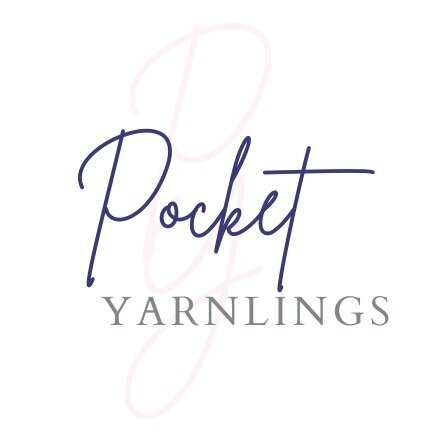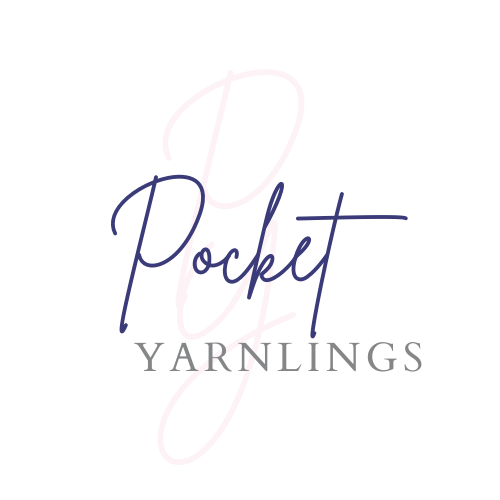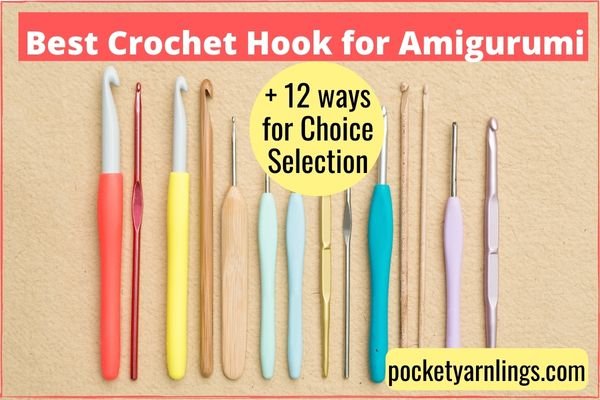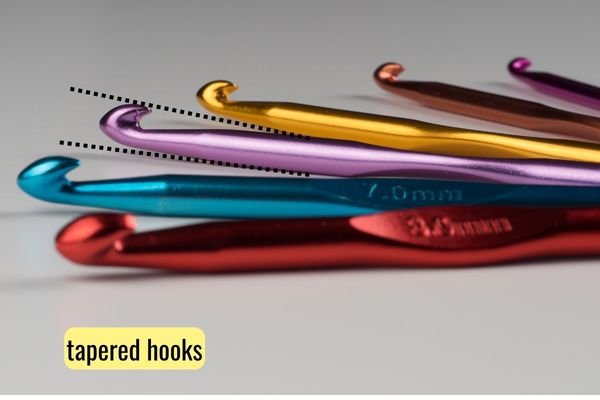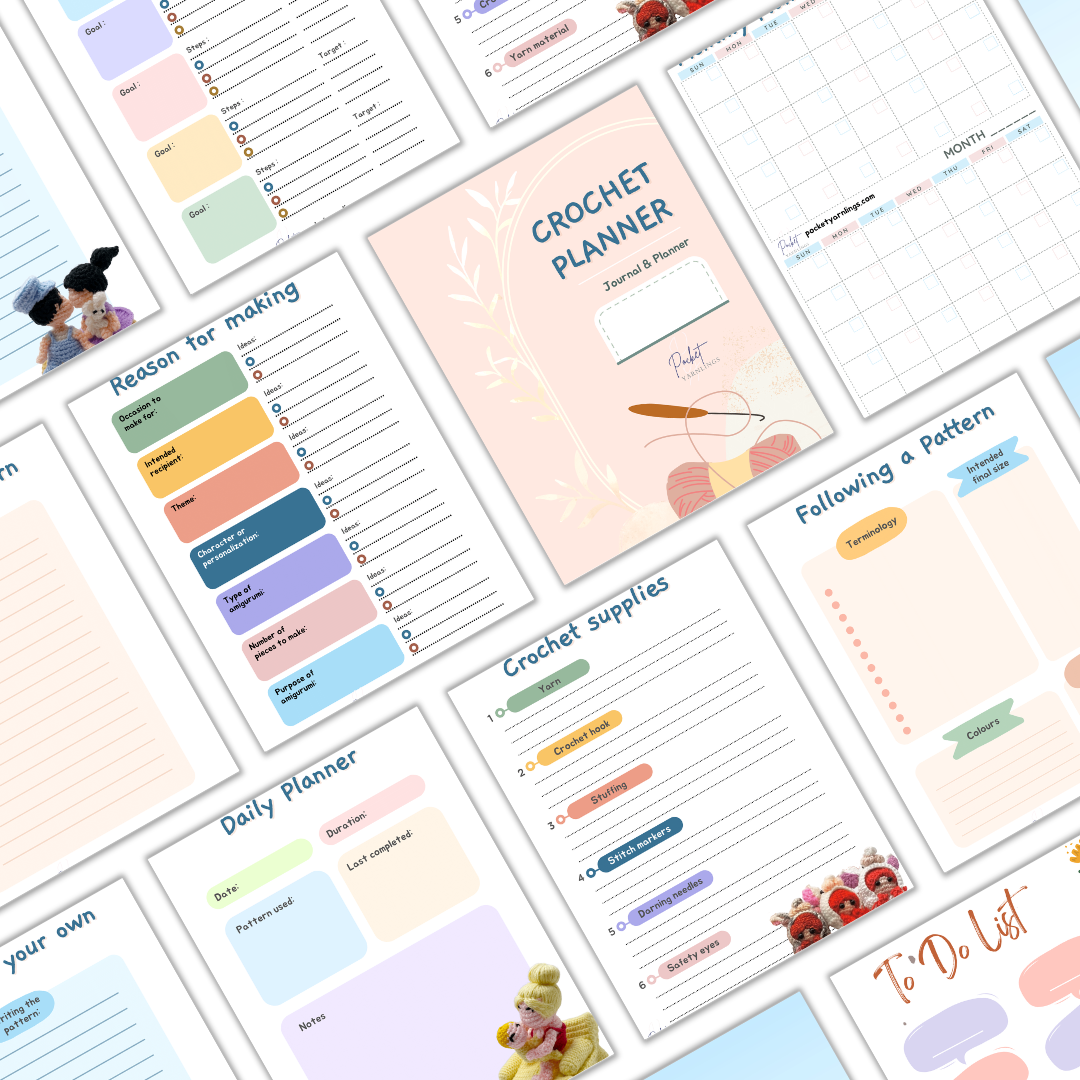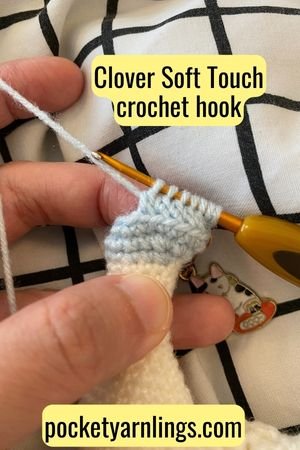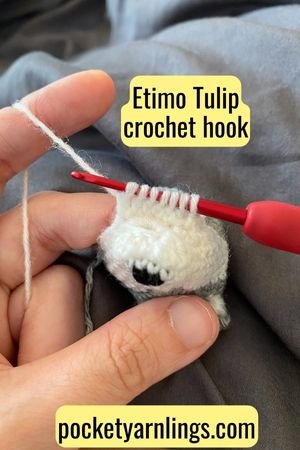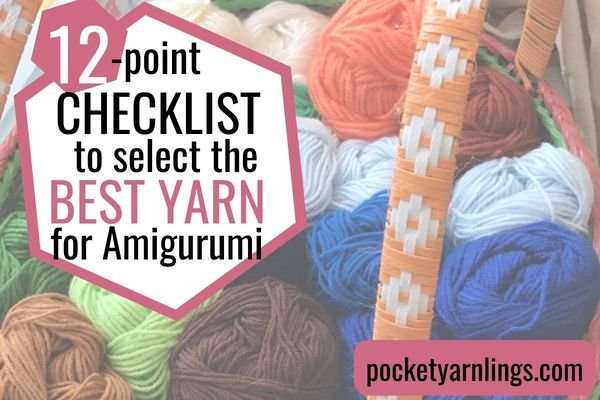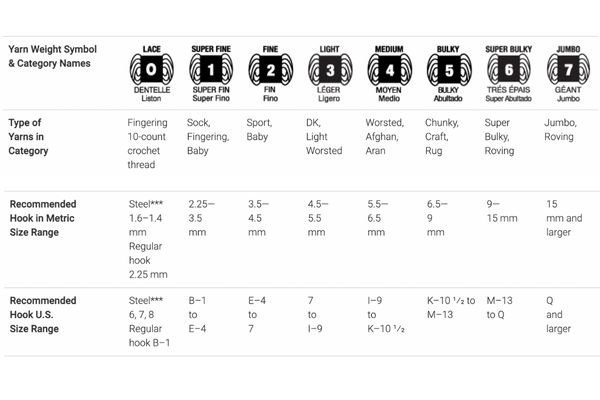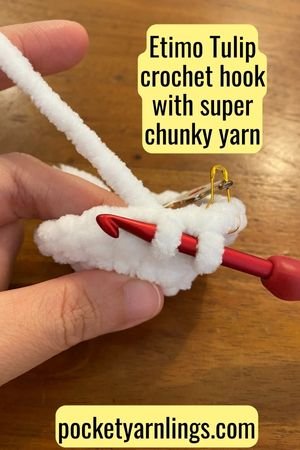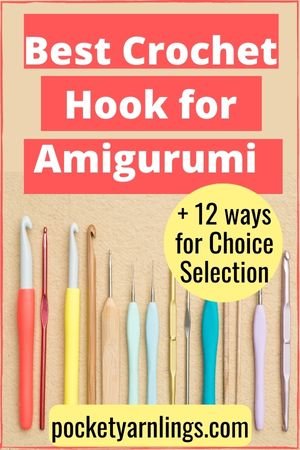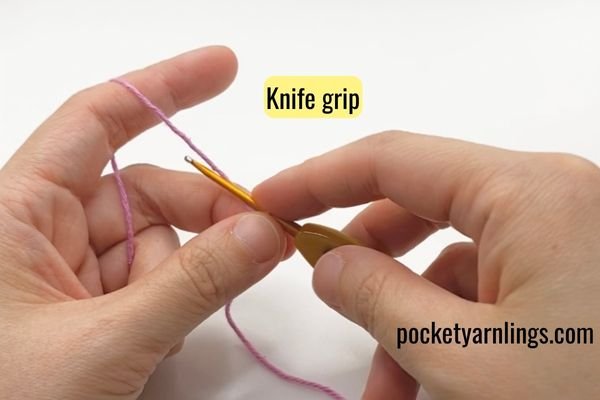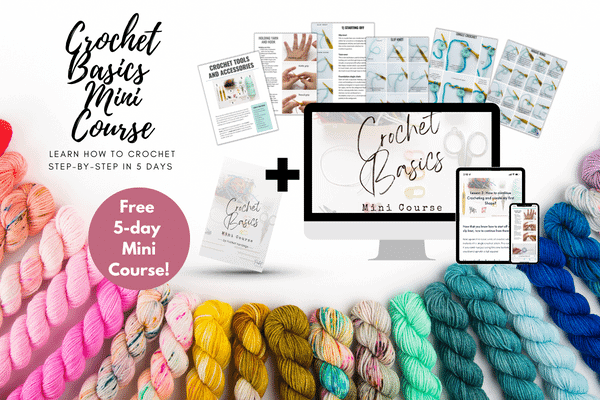Best Crochet Hook for Amigurumi and 12 ways for Choice Selection
The only other thing you need apart from the yarn to actually get started on your amigurumi project! If all else is not available, you could really get by with just your hook and yarn. So because this is so important, remember to select one that you really like and if the quality is good, it can last you a lifetime! There are different categories of crochet hooks, here I have 4 general ways I differentiate them - material, structure, ergonomic and size. Let us go through them individually.
There are affiliate links in this post. We will receive a commission if you make a purchase through our affiliate link at no extra cost to you. Most of the hook recommendations here have been used personally by me so check out the amigurumi examples!
Table of Contents Show
What are the 4 types of crochet hooks?
Here the 4 types of crochet hooks refers to the material of the crochet hooks, which could be metal, plastic, bamboo or wood. Just to be clear, here I am referring to the material of the whole hook, for instance metallic crochet hooks, means metallic from the head to the shaft. As you will see later on in ergonomic hooks, there are sometimes mixture of materials for the head and the shaft separately.
Metallic crochet hooks
If you are just starting out and unsure if you want to invest in a more expensive hook, try some cheap metallic hooks to experiment with, that was how I first started out when I wanted to try crocheting. Aluminium is the most widely available one and is budget friendly for beginners. Steels is often used for the smallest sized hook and used in fine thread crochet. If you do fall in love with crocheting and decided to do it more frequently, I would highly recommend you switch to ergonomic hooks (see later) because crocheting long periods with the metal hooks can cause wrist pain because of its relative inflexibility.
Plastic crochet hooks
Plastic hook refers to the hook being made up of acrylic and I see this commonly with larger hooks that are meant to be paired with bulky or jumbo yarn. Here I am referring to the whole hook being made of plastic (not just the shaft component). Similar to metal hooks, it is definitely more budget friendly but weighs down on the wrist if using it for long periods of time. For this home pouf project I did made up of recycled T-shirt yarn, the acrylic hook was causing me so much wrist pain that I actually went to go get an ergonomic one after bearing with the pain for a week.
Bamboo and Wooden crochet hooks
The last 2 materials that crochet hooks are made of include bamboo and wood. I have not personally had any experience trying these (though eventually one day I would try for sure!) but other crocheters with larger hands tend to prefer these options. The shafts are larger and longer and easier to grip without the weight that comes with metal hooks. There are also similarly ergonomic versions of these hooks in these materials as well. They also help beginner crocheters who find metal hooks too slippery, bamboo and wooden hooks tend to offer a bit more friction, but that is likely something that advanced crocheters would not prefer.
So I would say the best crochet hook for a beginner which just wants to start out would be a metallic hook because if is easily accessible and budget friendly. As for the best crochet hook for amigurumi in general then see the subsequent section on ergonomic hooks.
Which is better inline or tapered crochet hooks?
Some crafters who have crocheted for a long time would not even have known the difference between inline and tapered crochet hooks (me included!). To be honest, internationally, tapered hooks are lot more available over inline hooks, which also explains exposure to using it is consequently a lot more.
Inline crochet hooks
Inline hooks means that the hook head is in line with the shaft, so the circumference is the same throughout, which is great for crocheting more uniform and even stitches, helpful for crocheters experiencing issues with tension. The resultant crochet project also looks more even at the end.
Tapered crochet hooks
Tapered hooks, on the other hand, the shaft narrows in circumference or tapers down to the hook head, which is actually great for amigurumi because it helps with creating smaller stitches and also reduces gaps at the same time. Most crocheters who crochet amigurumis tend to prefer using tapered hooks because you crochet more tightly and reduce gaps in your amigurumi!
Free Crochet Planner Journal!
Click here to grab this 20-paged workbook and checklists that will help organize your creativity before you even start on your next crochet project! Or click on image on the left.
What makes a crochet hook ergonomic?
Ergonomic crochet hooks are basically hooks that make the crocheting process more comfortable and less painful from the repetitive stress injuries on the hands and wrists. This could be from tweaks to the size, shape or materials to the hook. The most commonly used ones are from Clover, Etimo Tulip and Furls.
Clover crochet hooks
My personal favourite is actuallly Clover Soft Touch, where the shaft or handle is made of plastic and there is a soft cushion padding (see the small grey part). After switching to this hook, I have not been able to put it down since, even when I compared it to the Etimo Tulip brand. It has significantly reduced the amount of wrist pain I get when I crochet for long periods. Another fan favourite is the Clover Amour series as well, where the handle is made up of elastomer rubber instead - many crocheters swear by this too. I have tried the larger sized one in that series but frankly I still prefer the Soft Touch a lot more.
Etimo Tulip crochet hooks
As for the Etimo Tulip crochet hooks (the red looks so pretty right), the shape of the shaft is made such that it is easy to grip and does not slip. It is made of a rubber material that fits snuggly into the hands and fingers and considerably helps with reducing pain when crocheting. If you ask me though, even though this is great, between the Clover Soft Touch and Tulip, I would pick the former any day (even though I do think it looks like pretty!). The price tag is quite hefty though so if you would like to try it out, maybe get 1 hook at the size you commonly use, that is what I did.
Furls crochet hooks
Last but not least, another favourite is Furls Hooks, they do have many ranges - from Furls Odyssey hooks to their wooden hooks. This is what I mean by changes to the materials and size plays an important factor in making the hook ergonomic, many crocheters with larger hands love using their hooks. They have a nice weight to them without causing too much strain on the wrists.
So in general, the best crochet hook for amigurumi would be an ergonomic one! Specifically if you ask me, I would say use Clover Soft Touch because using that even for hours of crocheting really helps to minimize wrist and hand pain.
How do I know what size crochet hook to use?
Since the crochet hook and the yarn go hand in hand, deciding on the size hook also largely depends on the yarn you intend to crochet with. You could decide on the yarn for the final amigurumi project first and then go along with the corresponding hook or it could be the reverse. For an entire 12-point checklist on all the things to consider before getting the best yarn for your next amigurumi, remember to check out this other comprehensive blog article.
Yarn label
Check the yarn label, they usually will state what crochet hook size is suitable to use with the yarn. Since here I am specifically talking about amigurumi, I would recommend it is better to go a crochet hook size down (or sometimes more) compared to what is being suggested on the yarn label. Or if they mentioned a range, pick the crochet hook on the smallest end of the range.
For example here, for the merino wool nylon blend they mentioned a range of 2.25-2.75mm and for the scheepjes catona yarn they mentioned 2.5-3.5mm, I used a 2.0mm Clover Soft Touch hook for both of them. The smaller hook helps to reduce the gaps in amigurumi, especially when paired together with a thicker (or heavier) yarn. Which brings us to the next point.
Yarn weight
The yarn weight below is taken from the Standard Craft Yarn Council suggestions, the ply weight is just an approximation as the weight does not necessarily always correlate with the ply. There is more information on the many different subtypes of yarn and the selection process for them in this blog post titled '12-point Checklist to Select the Best Yarn for Amigurumi'.
0 - Lace = thread (~1,2,3-ply)--> 1.4-2.25mm
1 - Super Fine = fingering (~4-ply)--> 2.25-3.5mm
2 - Fine = sport (~5-ply)--> 3.5-4.5mm
3 - Light = DK (~8-ply)--> 4.5-5.5mm
4 - Medium = worsted (~10-ply)--> 5.5-6.5mm
5 - Bulky = chunky (~12-ply)--> 6.5-9mm
6 - Super Bulky = super chunky (~14-ply)--> 9-15mm
7 - Jumbo = jumbo (~16-ply)--> 15mm and larger
So the suggestions above also similar to the previous point on deciding your crochet hook based on what the yarn label says. Which means if you decide to using super fine or fingering yarn, then you could choose a crochet hook between 2.25 to 3.25mm. These suggestions are however for crochet projects in general, so just like I mentioned above, if we are talking specifically about amigurumi, I would choose a crochet hook that is the next smallest size down (or rounded down) from the suggested ones above.
For instance, when using fingering yarn I often choose a 2.0mm hook and when using DK yarn I choose 3.0mm hook. As for the example down below here where I was actually using a super chunky yarn, I actually used a 4.5mm hook (which is actually more than 2 sizes down from what is suggested above!).
Test it out
At the end of the day, the choice for the best crochet hook size for your amigurumi really depends on you. Test it out to see what you are comfortable with, if you go down one hook size BUT you find that it is too tight to crochet or that the yarn keeps splitting with a smaller hook, then switch up to the next crochet hook size. After a while, if you have a yarn weight preference when you are selecting your yarns then you would usually stick to the same crochet hook size.
So the best hook size for amigurumi would probably be a 3.0mm, commonly used with DK yarn which is how most crocheters start off with amigurumi. Remember to try and use one size down from the recommended corresponding yarn label or weight!
Pin this image to refer to this blog post again when you need to!
What is the most comfortable way to hold a crochet hook?
Now that you have figured out which crochet hook you want and you have your yarn ready, then some simple things to think about when using that hook. For holding the yarn in place first, (for right-handers), place yarn in between your little and ring finger, wrap yarn around little finger. Then place yarn below the ring and middle fingers and then wrap around the index finger. Grab yarn between the middle finger and thumb. After you made your first slip knot, rest the yarn on your index finger.
There are 2 ways to grip your crochet hook when crocheting, consider interchanging between both grips to rest the strain on the wrists. For me, my go-to method would be using the knife grip, so figure out your own preference!
Knife grip
With right hand holding the crochet hook like a knife grip. It involves the hook grip part between the middle finger and thumb, with index finger resting on hook.
Pencil grip
Similarly position the yarn on left hand again, then hold hook using pencil grip. This time, the index, middle fingers and thumb are all on the hook grip .
To learn more on how to start crocheting with your crochet hook and yarn, remember to check out this crochet basics mini course where I go through the materials you need to set aside, together with some basic crochet techniques to make squares and circles. What are you waiting for - let's get started! Just click on the link below to get free access to this mini course.
Also if you are already familiar with the basics of crocheting and have been doing it for a while, you will find this '60 Crochet Planner Journal Ideas for your next Amigurumi (with free printable!)' down below useful!
What is your favourite crochet hook to use and how do you use it? Comment down below to let me know!
Free Crochet Planner Journal!
Click here to grab this 20-paged workbook and checklists that will help organize your creativity before you even start on your next crochet project! Or click on image on the left.
